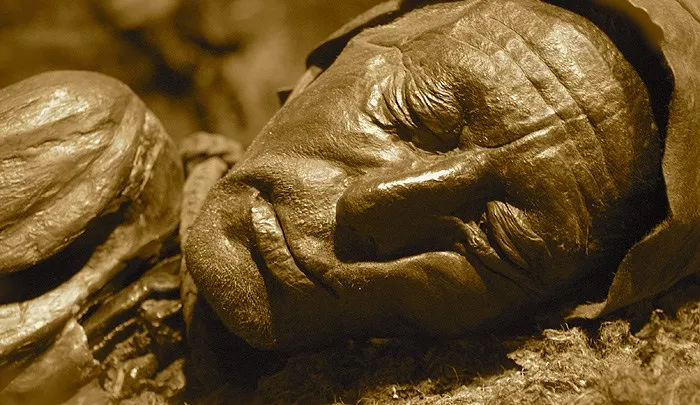Tollund Man: A Window into the Iron Age
The Tollund Man is one of the most remarkable archaeological discoveries of the 20th century. Found in a peat bog in Denmark, his naturally mummified body offers us a fascinating glimpse into life during the Pre-Roman Iron Age. Let’s delve into the story of this ancient man, his discovery, and his impact on science and culture.
Get your dose of History via Email
Who Was Tollund Man?
The Tollund Man lived during the 5th century BCE, a time known as the Pre-Roman Iron Age in Scandinavia. He died between 405 and 384 BCE and was found preserved as a bog body near Silkeborg on the Jutland peninsula in Denmark. His features were so well-preserved that the peat cutters who discovered him initially thought he was a recent murder victim. Yet, the truth about his origins was much older and far more intriguing.
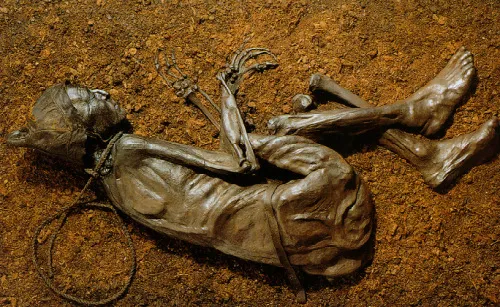
Discovery of the Tollund Man
On May 8, 1950, brothers Viggo and Emil Hojgaard discovered the Tollund Man while cutting peat in the Bjældskovdal peat bog. They were working about 12 kilometers west of Silkeborg when they stumbled upon his body. At first glance, the remains appeared so fresh that the men suspected a recent crime. The bog had preserved him so well that he was mistaken for a modern murder victim.
The Tollund Man was found buried under 2.3 meters of peat, positioned in a fetal pose. He wore a pointed sheepskin and wool cap, secured with a hide thong under his chin. A smooth hide belt wrapped around his waist, but otherwise, he was naked. A noose made of plaited animal hide was drawn tightly around his neck, trailing down his back, indicating the cause of his death. His hair was cropped so short that his cap almost entirely concealed it, and short stubble on his chin and upper lip suggested he hadn’t shaved the day he died.
Theories About His Death
Scholars believe the Tollund Man died by hanging, possibly as a human sacrifice. The arrangement of his body and the closure of his eyes and mouth support this theory. Experts suggest that his death was not a criminal execution but rather a ritual offering, as many cultures of the time practiced human sacrifices.
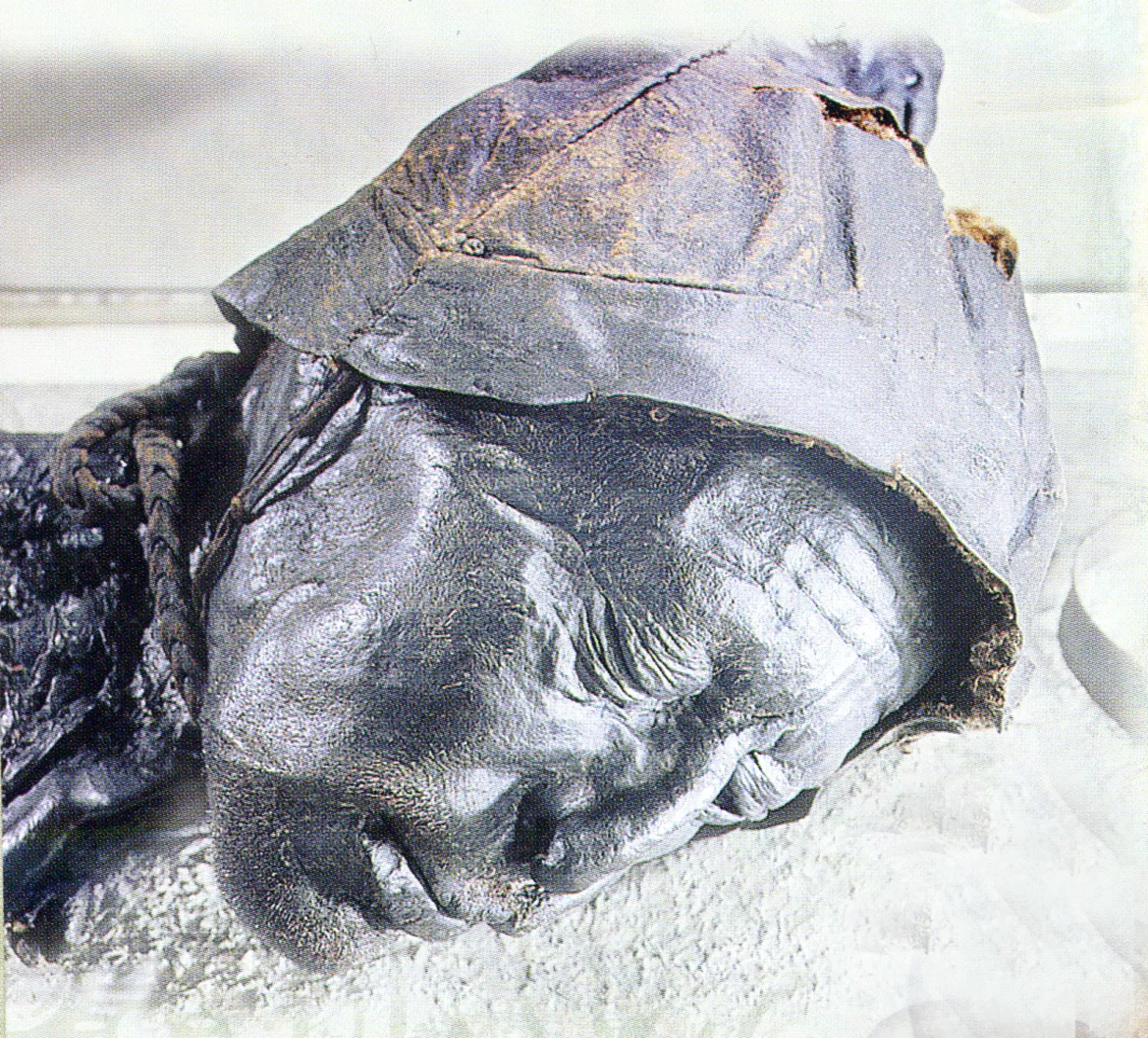
Scientific Examination
Radiocarbon Dating and Preservation
Radiocarbon dating placed the Tollund Man’s death between 405 and 380 BCE. The bog’s acidic environment, low oxygen levels, and cold climate preserved his body. This preservation is due to Sphagnum, a type of bryophyte that thrives in bogs. The acid produced by Sphagnum inhibits decomposition, preserving the soft tissues of the body but dissolving the bones.
Isotope Analysis and Diet
Scientists conducted an isotope analysis of strontium in the Tollund Man’s hair and femur. This analysis provided insights into his movements and diet during the last year of his life. Results showed only slight differences in strontium isotope proportions, indicating that he spent his final year in Denmark and traveled at least 30 kilometers in his last six months.
Examinations of his stomach and intestines revealed that his last meal was a porridge made from barley, flax, wild weed seeds, and some fish. The stage of digestion suggested he ate 12 to 24 hours before his death. The absence of meat or fresh fruit in the meal indicates he likely ate during winter or early spring, when these items were scarce.
Physical Examination
X-rays and examinations showed that the Tollund Man’s head, heart, lungs, and liver were well-preserved. His cervical vertebrae were undamaged, a common occurrence in hangings, supporting the theory that he died by hanging rather than strangulation. Radiography revealed that his tongue was distended, further evidence of hanging.
His feet and right thumb, also well-conserved by the peat, were preserved in formalin for future examination. In 1976, the Danish police conducted a fingerprint analysis, making Tollund Man’s thumbprint one of the oldest recorded.
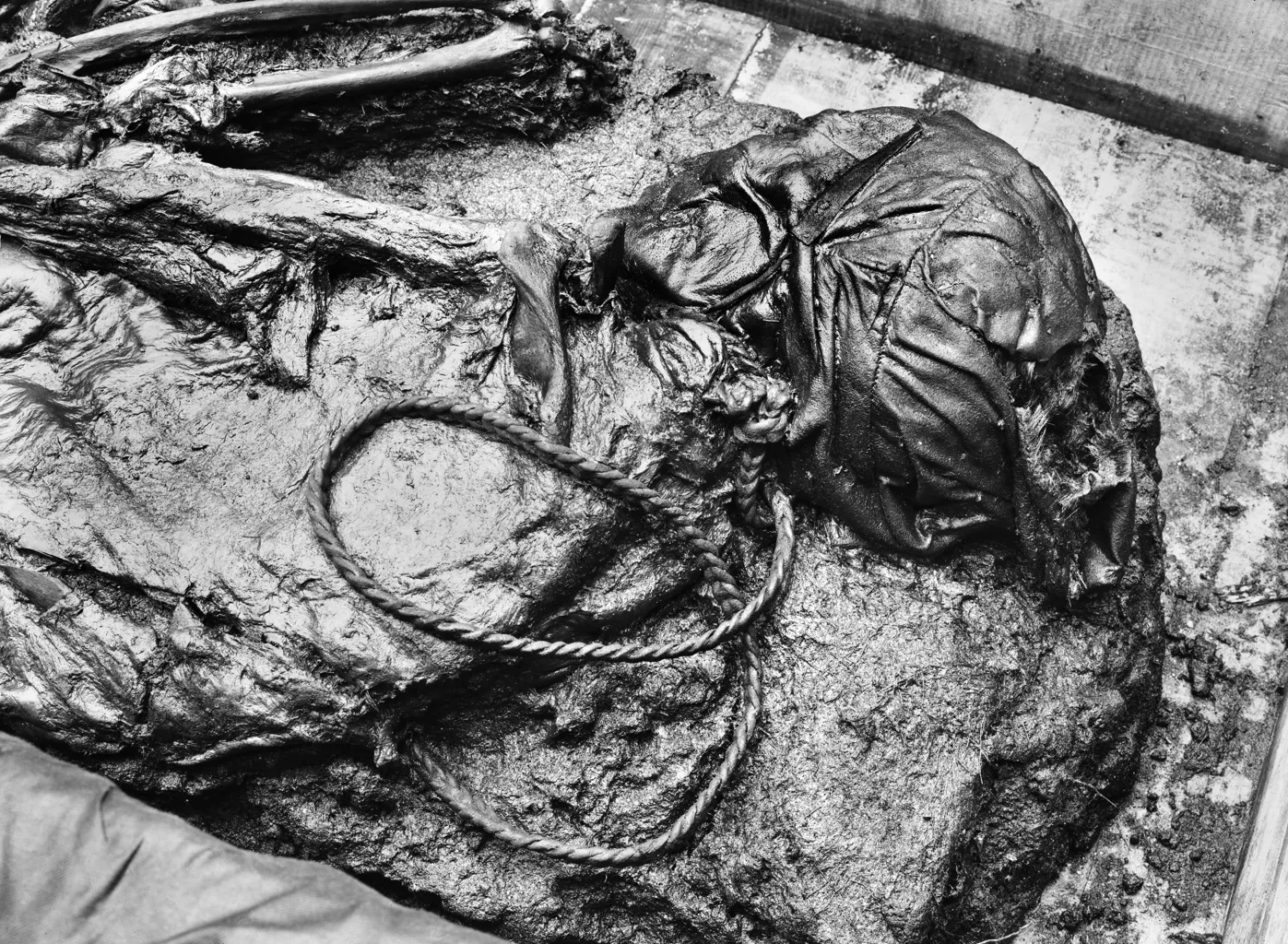
Display and Preservation
Display at Silkeborg Museum
The Tollund Man is displayed at the Silkeborg Museum in Denmark. However, only the head is original. When he was discovered in the early 1950s, conservation techniques for organic material were not advanced enough to preserve the entire body. The forensic examiners decided to sever the head and preserve it, while the rest of the body was left to desiccate. In 1987, the Silkeborg Museum reconstructed the body using the skeletal remains as a base, creating a replica for display. Today, visitors can see the original head attached to a reconstructed body, allowing them to glimpse Iron Age life.
Other Bog Bodies in Denmark
Denmark has yielded more than 500 bog bodies and skeletal remains dating back to the Iron Age. Other notable finds include the Borremose bodies, Huldremose Woman, and Grauballe Man. These discoveries offer valuable insights into Iron Age culture, rituals, and lifestyles. Danish museums house and display approximately 30 of these bog bodies for research and public education.
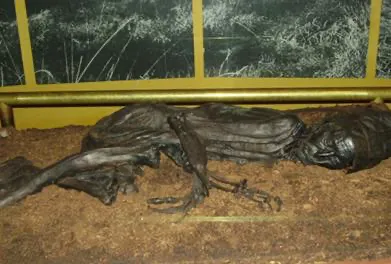
Tollund Man in Popular Culture
The Tollund Man has inspired various works of art and literature. Irish poet Seamus Heaney wrote a series of poems inspired by P. V. Glob’s study of mummified Iron Age bodies found in Jutland’s peat bogs. His poem “The Tollund Man,” published in his Wintering Out collection, draws parallels between the ritual sacrifice and those who died during “The Troubles” in Ireland. In 1973, Heaney even wrote an excerpt from the poem in the exhibit’s guest book at the Tollund Man exhibit.
British author Margaret Drabble uses the Tollund Man as a motif in her 1989 novel A Natural Curiosity. Her characters’ fascination with the Tollund Man serves as a satirical criticism of Margaret Thatcher’s England.
The Tollund Man also appears in several songs, including “Tollund Man” by The Mountain Goats and “Curse of the Tollund Man” by The Darkness. He is mentioned in the television series Bones and the 2016 film Sacrifice, where a bog body is discovered in the Shetland Islands.
Anne Youngson’s novel Meet Me at the Museum features the Tollund Man as a central theme. The book’s protagonist, a fictional curator at the Silkeborg Museum, corresponds with an English woman and reflects on the life and death of the Tollund Man.
Conclusion
The Tollund Man remains a fascinating link to the past. As a naturally preserved bog body, he offers invaluable insights into Iron Age life and rituals. His discovery and subsequent studies have enriched our understanding of ancient European cultures. Moreover, his enduring presence in literature and art continues to captivate and inspire people worldwide, reminding us of the deep connections between the past and the present.

